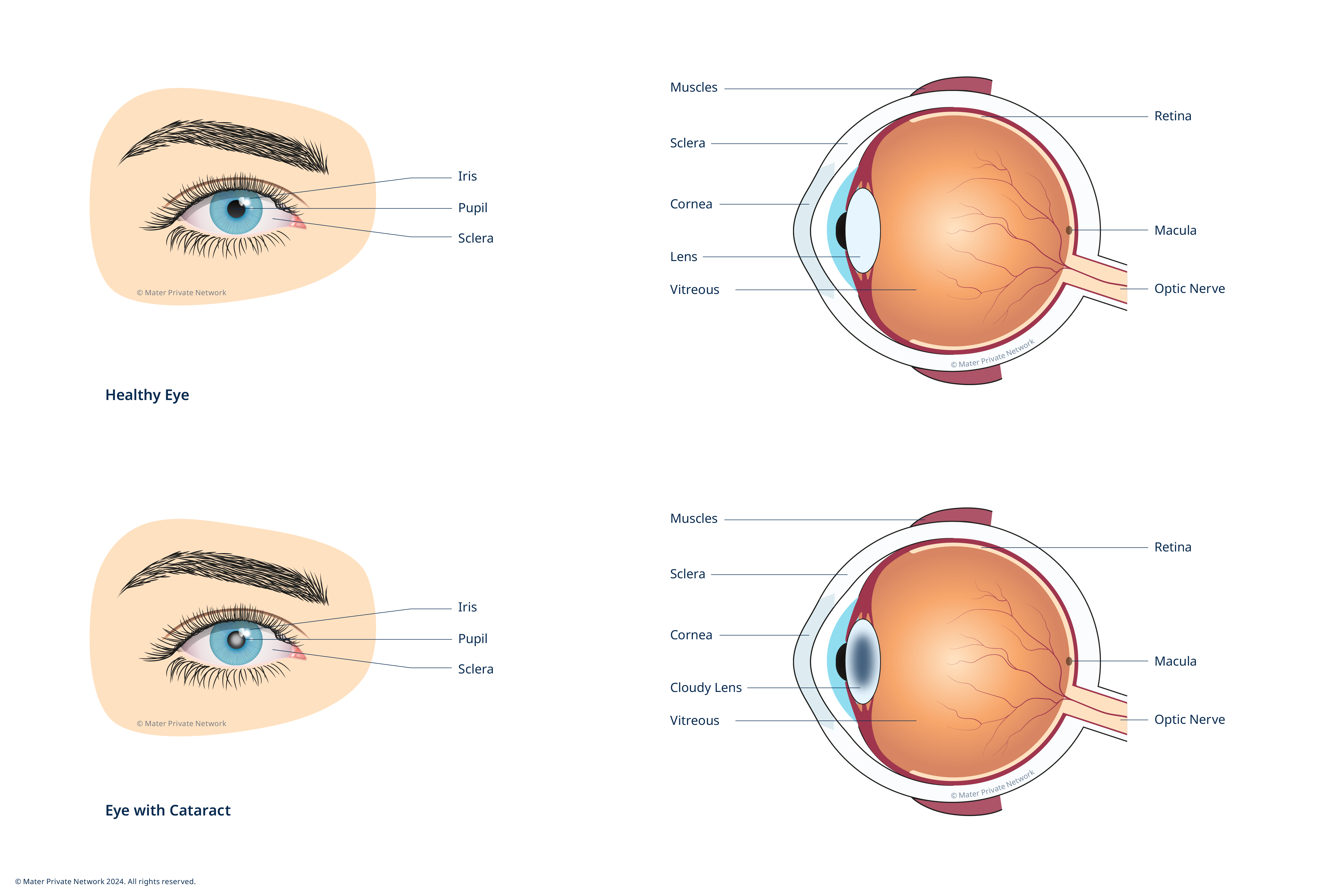Cataracts
I’ve been told that I have cataracts. What is it exactly?
A cataract is a clouding of the normally clear lens of your eye. For people who have cataracts, seeing through cloudy lenses is a bit like looking through a foggy or steamed-up window. Cataracts can make it more difficult to read, drive a car (especially at night) or see people’s faces.
Cataracts generally develop slowly but over time interfere with your vision. Initially better lighting and prescription glasses can help you deal with cataracts. But at some point you may need cataract surgery. If untreated for a prolonged period it may lead to an increased risk of glaucoma, eye inflammation or vision loss.
Cataract surgery is one of the most commonly performed eye surgeries. Our Mater Private eye surgeons offer all the lens options for modern cataract surgery. About 95% of people who receive a standard lens implant have their vision restored to its pre-cataract level.

What are the symptoms of cataracts?
Cataracts usually progresses gradually. Most age-related cataracts may progress over a period of two years. Other types of cataracts, especially in younger people and diabetics, may progress fast. The symptoms include:
- Clouded or blurred vision
- Difficulty in seeing during the night
- Sensitivity to light and glare
- Need for brighter than normal light to read or see objects
- Seeing halo around lights
- Seeing objects in faded or yellow color
- Headache due to changes in vision
- Eye pain
What are the causes of cataracts?
The majority of cataracts are related to ageing. Cataracts are occasionally seen in babies. This is called congenital cataract. Cataracts may also develop as a result of other diseases such as diabetes or trauma to the eye.
Risk factors associated with cataract development are:
- Ageing: people above 55 years of age are at higher risk
- Family history: more likely to develop if any member in the family had cataract
- Diabetes
- Injury to the eye
- Long-term use of steroid medications, especially eye drops
- Past surgery to the eye
- Smoking
- Obesity
- High blood pressure
- Other conditions such as myotonic dystrophy and use of medications
How can I prevent cataracts?
Although there are no guaranteed ways to prevent cataracts, lifestyle changes may reduce the risk of developing it, including:
- Getting your eyes tested regularly
- Making sure you use the correct eye glasses or contact lenses
- Using sunglasses when you go out
- Keeping check on your blood pressure and blood sugar levels
- Maintaining a healthy height-to-weight ratio
How are cataracts diagnosed?
A number of tests may be used to diagnose cataracts:
- Visual acuity test: to assess your ability to view details of an image clearly.
- Refractive error assessment: to assess amount of refractive error induced by cataract in the eye and whether it can be resolved by glasses alone and without surgery.
- Slit lamp examination: uses pupil-dilating eye drops to perform a detailed examination of the eye in order to view the extent of the cataract.
- Indirect opthalmoscopy: to examine the retina for abnormalities.
- Tonometry: to measure the pressure of the eye.









